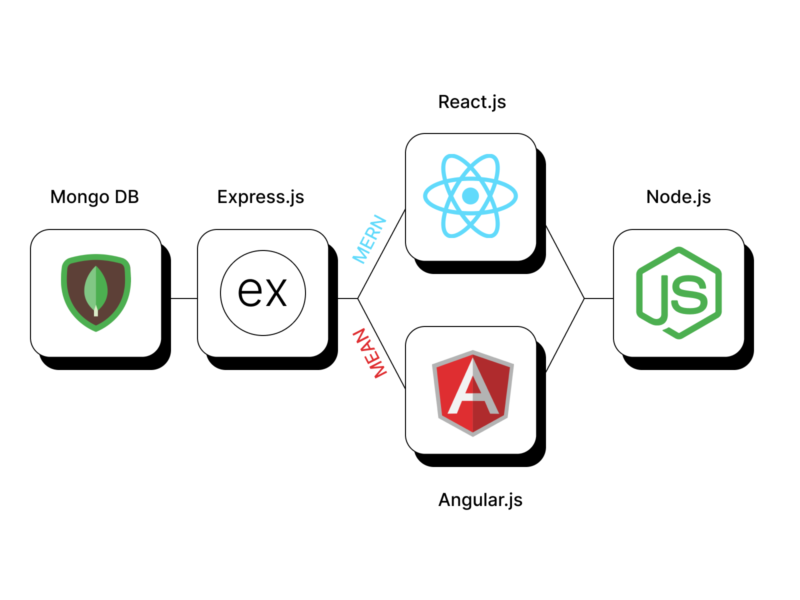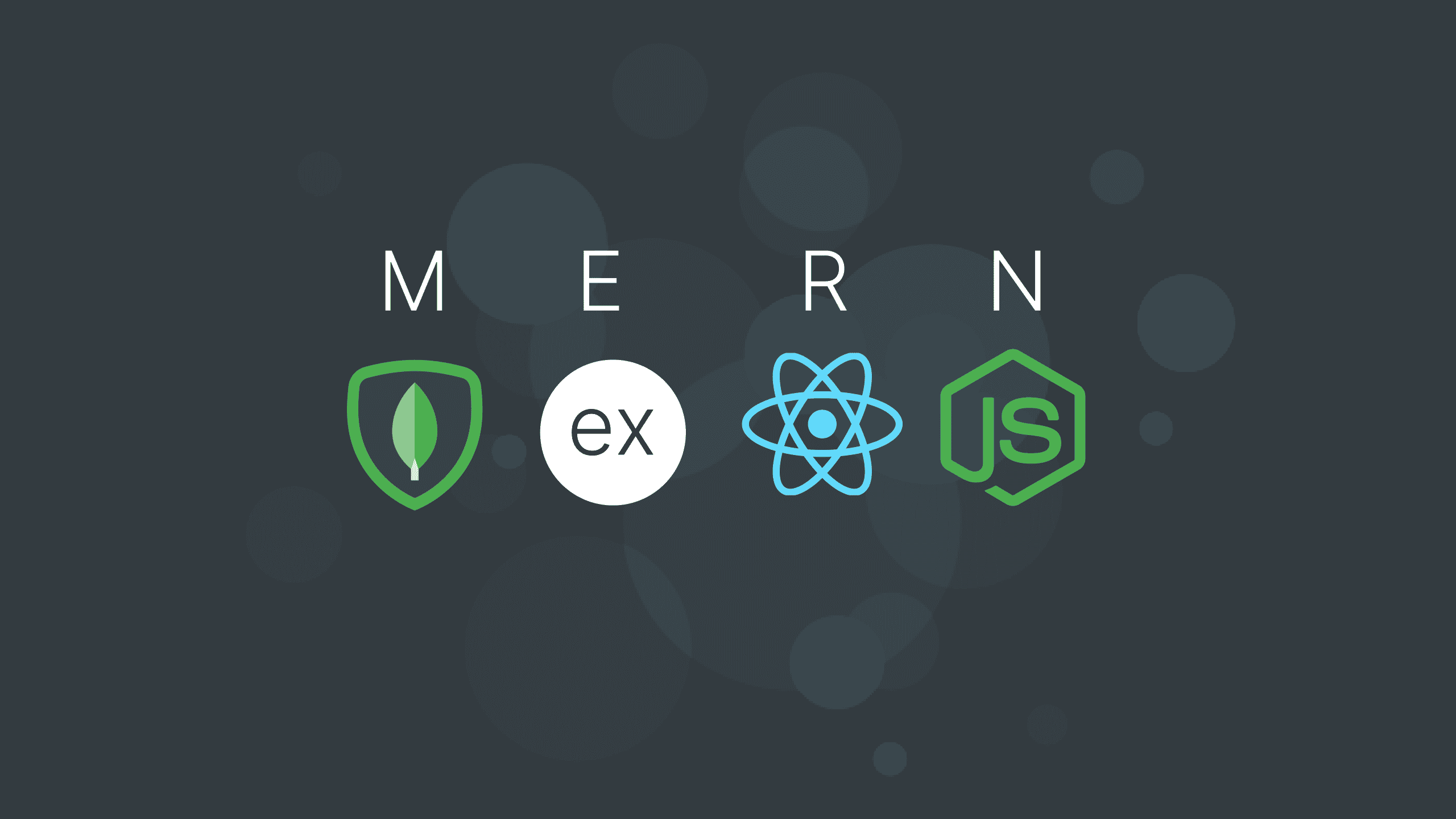Web development is one of the top domains in the IT sector presently, with several applications and uses in our daily lives. Web applications are used in almost every industry, providing an easy interface for the users to interact with. No wonder there are more than 200,000 web developers currently in the USA!
While developing web development applications, one needs to consider both the client and server sides, i.e., the frontend and backend. This is referred to as full stack product development, which syncs both the backend and frontend parts of an application, making it fully functional. The frontend consists of the UI of the website, which the user can see and interact with. On the other hand, the backend handles the functionality using servers, APIs, databases, etc., which the user cannot see or use directly.
There are two main tech stacks for web development: MEAN Stack Development and MERN Stack Development. You will get to know more about these below.
MERN stack deployment architecture
MERN stack uses a three-tier architecture comprising the web, server, and database layer, all communicating through Javascript or JSON:
Web Layer
This consists of the frontend, i.e., React.js, and it’s the top tier. This is the client side, where the user interacts with the app and its features and connects it to the backend.
Server Layer
The second tier comprises Express.js and Node.js, which handle the HTTP requests and responses obtained from the frontend when the user interacts. The Express.js framework runs inside the Node.js server, which interacts with the database to perform the necessary function.
Database layer
The third and the deepest layer contains MongoDB, which stores all the data received by the application. It is highly compatible with React and Express and is used for retrieving data, updating, or deleting it.
Components of MERN
MERN Stack consists of four components that are based on Javascript: MongoDB, Express.js, React.js, and Node.js, all of which have been briefed below:
1. MongoDB
This is of the leading NoSQL databases, i.e., databases which do not store data in a tabular form as in RDBMS and can be accessed without any SQL. The data is stored in the form of BSON (Binary Javascript Object Notation). It is extremely scalable and fast but cannot handle complex operations such as joins.
2. Express.js
Express.js is a backend framework that runs with the help of Javascript. It helps develop robust applications in a fast and accessible environment and comes with a simple development environment. Used on the server side, it can also integrate multiple functionalities with the help of APIs or the wide range of third-party plugins available.
3. React.js
One of the most popular frontend frameworks out there, React.js is used to build UI components more efficiently and effectively by using components from the React library. It offers a fast and secure solution for creating the view layer for the users and can work on mobile and web apps. One of the main attractions is that it reflects the changes in runtime without needing to reload the page.
4. Node.js
To compile all these and run them efficiently, Node.js is used. It’s a cross-platform runtime environment that executes the Javascript code; without it, the application would not run and function. It can be installed on various operating systems such as macOS and Windows. Node.js helps to develop and run the backend services smoothly and with a quick speed.
Further Read: The Best Technology Stack For Enterprise-level Application Development
10 reasons to choose MERN stack development

1. Reusable code
This helps to reduce the development time significantly, as the MERN stack components are interchangeable and reusable. Thus, if one web app has already been successfully used and deployed, you can also take that piece of code and use it in your application.
2. Open Source
MERN stack is open-source, which removes the hassle of licensing and provides a well-knit community for resources related to its components. It can also be accessed easily by public repositories and libraries.
3. Improved performance
It offers a flexible and scalable solution for developing and deploying web apps, especially with the help of Node.js. The performance and speed of the application are significantly improved, as it can manage heavy events and data.
4. Highly customizable frontend
React.js is an extremely popular choice of UI due to its highly customizable and reusable components. This can provide the users with many options from different options to give them the best user experience possible.
5. Strong community
MERN stack is extremely well documented and has tons of tutorials on the web, owing to its high popularity. It’s also open-source, which brings in a community of developers to build this tech stack.
6. Real-time experience
A prominent feature of this tech stack is that it works in real-time, i.e., notifications, updates, etc., are done instantly, without the need to wait for the page to refresh. This comes in extremely handy, especially for social media or e-commerce apps.
7. SEO Optimization
Pages are ranked in Google through SEO, which brings the app to the top page when related keywords are searched. MERN stack has an extremely low loading time and contains information such as page metadata, which facilitates SEO and helps to give the app gain more coverage.
8. Cloud Compatible
We already know that NoSQL databases can be easily integrated with cloud features, which can be managed from anywhere in the world. The use of MongoDB thus helps to incorporate this accessible, cost-effective, and scalable feature.
9. Use of only one language
MERN stack uses only one language, i.e., Javascript eases the interaction between client and server. It also reduces the extra load of learning multiple languages and frameworks. Developers having a good understanding of Javascript can easily work with this tech stack.
10. Cost-effective
It is used to create a full stack application without hiring a separate frontend and backend team, making it very cost-effective.
MERN stack vs. MEAN stack

In terms of:
Technologies used
MERN stack uses React.js for frontend development, while MEAN stack uses Angular.js
Learning
MERN stack has good documentation and is easier to learn, while the MEAN stack is a bit more tedious
Flow of data
In the MERN stack, the flow of data is unidirectional, while it’s bidirectional when it comes to the MERN stack
Type of applications
MERN stack is preferred for smaller applications with lower complexity in data, while enterprises prefer MEAN stack
Third-party applications
MERN stack uses React.js, which requires additional calls to interact with libraries. In contrast, the MEAN stack has inbuilt plugins through Angular.js, which are ready-to-use.
Markovate: Integrating MERN stack with product development
It is evident that MERN stack development is not going anywhere anytime soon, and the power it holds to build scalable and robust applications can prove to be extremely useful. This tech stack is self-sufficient to build a web application from scratch, knowing just one programming language. Thus, integrating it with our services and using it to deliver the best products for your enterprises is a must.
Being a product development company, Markovate looks at and researches the latest trends and technologies to come up with the best solutions for our clients for developing our applications. Throughout the entire product development lifecycle, from the ideation to the prototyping to the final design and execution, we make sure our team of designers and developers customize the product in all the possible ways they can, technical or non-technical, to help you; convert your idea into reality!
FAQs
1. What are the applications built with MERN Stack?
Applications such as Whatsapp, Instagram, Discovery, and Airbnb rely on the MERN stack.
2. Is MERN Stack the Future?
Yes, the MERN stack seems to have a bright future due to the popularity of Javascript. Businesses are constantly looking for experienced full-stack developers to help with their applications.
3. Why Is MERN Stack Popular?
MERN stack might be popular because of its agility and because it is a one-language stack that uses one of the most popular libraries in the world (React) and is effective in terms of resources.





















Discussion about this post